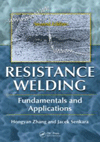For the past 15 years or so, assemblers have used SPR as an
alternative to spot welding, especially when joining aluminum with other
materials. The reasons why SPR is preferred are many. They include:
*Greater and repeatable static strength and longer fatigue
life, which let the manufacturer reduce the number of fastening points in
certain applications.
*No generation of heat or heat problems related to pure
aluminum and aluminum alloys, which melt below 800 C.
*Compatible with coated, galvanized and prepainted surfaces.
*No need to purchase equipment for monitoring or smoke
exhaust.
*Shorter cycle time.
*Lower assembly line and component cost.
*Easy to automate for high-speed operation.
*More uniform appearance.
*A ‘greener’ process, i.e., it’s cleaner, quieter and
produces no harmful fumes or smells.
“We feel that at least 30% of the situations where spot
welding is employed can be replaced beneficially by SPR,” ” says Ryan Ostach, ,
application engineer supervisor at AVDEL.
“The level of acceptance of SPR depends to a large extent on
the level of knowledge,” says Dr. Sumanjit Singh, chief technical officer for
Huys Ltd. and holder of three patents for SPR products. “In the near future,
the use of material combinations such as fiber-reinforced plastics will
increase. Welding will not be a viable alternative.”
“New materials are constantly being developed, and
until we’re challenged, we’re not sure what SPR can join together,” says Dean
Monday, North American business development manager for Henrob Corp.
Get our new eMagazine delivered to your inbox every month.
Stay in the know on the latest assembly trends.
SUBSCRIBE TODAY!Copyright ©2024. All Rights Reserved BNP Media.
Design, CMS, Hosting & Web Development :: ePublishing




